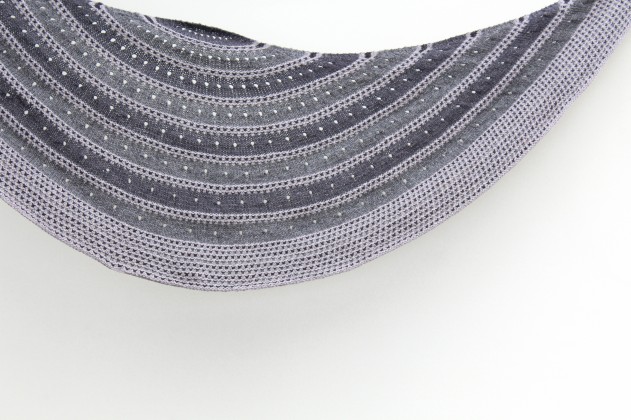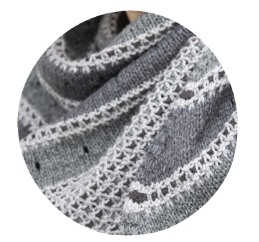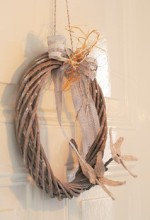Apologies to my German readers, this post will be in English./Entschuldigung für den Beitrag auf Englisch.
It is already the end of January, and I am only now writing the first blogpost of the year! There never seems to be enough time for everything – and for me writing definitely often gets the short end of the stick. Right now I am working on a few very exciting projects. I will be able to talk about them soon, so please do check back in!
I am starting into 2016 on the blog with something that I don´t do too often, even though I always enjoy it tremendously; I have an interview for you all! James Bartley is my new tech editor and a very fascinating guy. He is a mathematician who used to be a professional dancer. Also, he has a knitting podcast that you can find as “DancingGeek Podcast” on Youtube and iTunes. On Ravelry, Twitter and Instagram he is using the alias dancinggeek as well.
James was really generous with his time and answered all of my many questions – and the best is: He is accepting new clients. So if you are a designer looking for someone to check your knitting patterns make sure to get in touch with him.
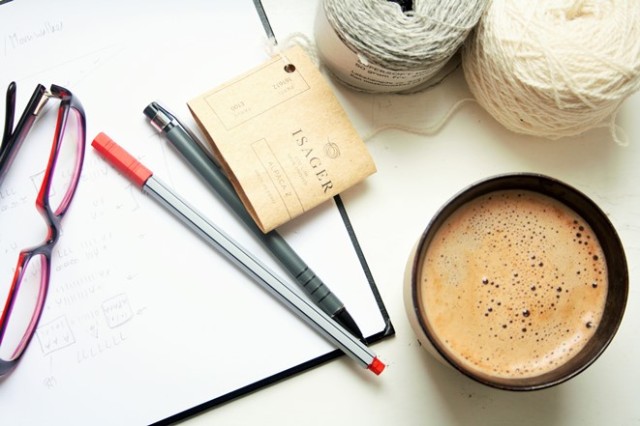
Hi James, thank you for taking the time to talk to me on my blog. Let´s tell people a bit about you. To start things off, how did it come about that you became a knitter and when was that? I first tried knitting thanks to my Mum, who was very talented and multi-craftual! It wasn’t until many years later, when I saw my sister knitting, that I tried picking it up again. That was about 4 years ago, and I’ve been hooked since then.
What things do you knit the most often, and do you have any favourite colours? I’m pretty sure I must have knit more socks than other projects, I know they’ll get worn lots, they’re a smaller project, and the complexity can vary to suit all moods. I love knitting blankets on my giant 27mm wooden needles, but don’t do it too often as it needs a lot of yarn and then I have to find a home for the finished item!
My absolute favourite colour is orange. It’s vibrant & warm, reminding of the sunny Mediterranean, citrus fruit, pottery & clay. All earthy, warm and joyful things for me. I love to see it mixed in with blue, green and brown. Those four together cover my entire wardrobe, I suspect.
Which designers do you like? I really like geometrical patterns & textures in knitting, so a couple of designers that pop to mind are Josh Ryks & Anthony Casalena. They both do a lot of beautiful shawls that make me wish I liked wearing shawls more often! If I knit more jumpers I would make them based on their shawl designs.
Do you have a local knitting group that you attend? There is a local knitting group that I went to a few times, but I find it difficult to knit and socialise at the same time. I love to get engrossed in my knitting and the patterns, so trying to hold a conversation at the same time really stumps me. That’s why I love Ravelry, podcasts, and the online knitting community in general. That and I’m a big nerd!
You have a popular knitting podcast. What are your experiences with it, and are you planning on recording new episodes this year? I really struggle to think of my podcast as being popular, though I’m lucky enough to have meet some wonderful people who pay me lovely compliments on it. It was originally started as a way of joining the community, as I find forums difficult to engage with, and it has been such an uplifting experience. I have said this many, many times: the online knitting community is the nicest place I know.
I’m always thinking about the next episode, so I’m always planning on doing another. I always want to do more, both in number and content, however I’m learning that I have limits on what I can achieve without burning out. I’ll keep recording, even if the gaps between episodes vary sometimes.
Which part of your podcast gets the most feedback? The stuff that gets the most consistent feedback is when I talk about my personal life. The knitting side is what binds us together (who doesn’t want to look at pretty yarn, right?!) but I consistently find that it is when I talk about myself that I connect with people, who then write some amazing messages to me.
Do you have any hobbies other than knitting and podcasting, and what´s your professional background and career path, I know you´ve changed directions quite a bit? Hobbies wax and wane for me, right now I’m thoroughly obsessed with Dungeons and Dragons! Others include foreign languages, maths, dance & running. And anything online.
My career path is not a traditional one for sure; I left uni with a degree in maths, fluent in French, & time spent studying contemporary dance. I then went and did customer support for software for schools, obviously! Following that I had some time out and changed to working as a freelance contemporary dancer and lecturer. After a while, my obsession with knitting started to take over, and I have recently turned professional as a Tech Editor for knitting patterns. It may not look like it, but these jobs are all connected by a love of patterns and systems. I love to be a nerd, I just change which domain I’m in.
How did you decide to start a tech editing business? Deciding to Tech Edit came through coming into contact online with a wonderful lady called Joeli, from Joeli’s Kitchen. At some point she mentioned that Tech Editing would probably be a great fit for me and I was curious, I’d never heard of this work before. I started to find out about it, had some great conversations with her, and after working through her exercises realised that it was something that I could really enjoy and be good at. The idea that someone would pay me to do this was perfect!
Why do you enjoy editing patterns and does your math degree come in handy? Editing patterns is so natural, that I do it whenever I follow one. It didn’t occur to me at first that other people don’t do this! I’m always checking details, making sure the numbers work, and asking questions when something seems wrong. I’m a perfectionist, which has its downsides, but makes editing fun! Mathematics uses the same skills, if more abstracted. It’s about making sure every detail works, and makes sense together, otherwise the whole thing could fall apart. If it wasn’t such a fun puzzle I imagine it would sound quite stressful.
Since I am enjoying the random question section your your podcast very much, here are two very random questions for you. What invention would you like to see happening next, knitting-related or not? Oooh, great question! I think it would be awesome to be able to teleport. I love being abroad, but I hate traveling. To be able to just appear somewhere immediately would be amazing! Spend a few hours in Kenya, a day trip to Australia, a meal in a different continent. The internet does a lot to make the world a smaller place, but there’s something special about physical presence still.
Who would you like to talk to if you had the opportunity and what would you say? Who to talk to? That’s tricky. World leaders, late family members, admired performers. How to choose?! I’ll go for my future self, so I can ask if everything works out ok. Life can be hard, so a little reassurance would go a long way!
Thank you James for taking the time to answer all those questions and for making it a fascinating read!

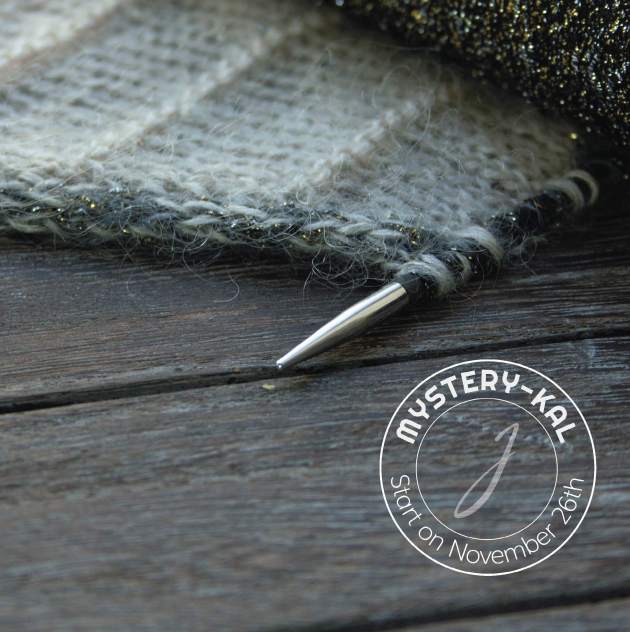

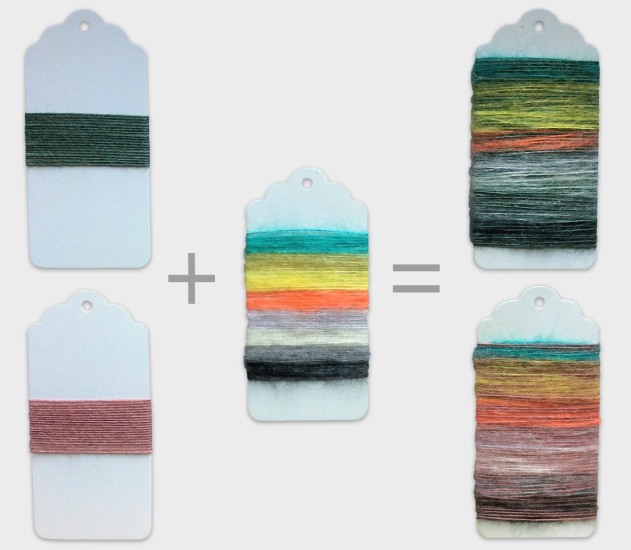
 ay to use the blending effect of working with several strands is to wind a yarn with four strands of one colour. Next wind a yarn with three strands of the base colour and one strand of a contrast colour. Then wind a 2-2 yarn and a 1-3 yarn, and finally a yarn that consists of four strands of only the new colour. You have created your own gradient yarn!
ay to use the blending effect of working with several strands is to wind a yarn with four strands of one colour. Next wind a yarn with three strands of the base colour and one strand of a contrast colour. Then wind a 2-2 yarn and a 1-3 yarn, and finally a yarn that consists of four strands of only the new colour. You have created your own gradient yarn! Starting on October 8th, we will be knitting a comfy shawl together in my ravelry group
Starting on October 8th, we will be knitting a comfy shawl together in my ravelry group  When I was reading about colours this summer, I came accross something that is called “optical mixture”. It´s a fancy name for something we all know well: When you see a pattern of tiny yellow and blue dots from a distance, you will get the impression that the area they cover is actually green. If you retreat far enough, you can no longer discern the individual dots and colours. That´s the reason why, in printing, it is possible to accurately depict a wide range of colours with only Cyan, Magenta, Yellow and Black (CMYK) as bases without the image looking all spotted. The clue is to print tiny dots.
When I was reading about colours this summer, I came accross something that is called “optical mixture”. It´s a fancy name for something we all know well: When you see a pattern of tiny yellow and blue dots from a distance, you will get the impression that the area they cover is actually green. If you retreat far enough, you can no longer discern the individual dots and colours. That´s the reason why, in printing, it is possible to accurately depict a wide range of colours with only Cyan, Magenta, Yellow and Black (CMYK) as bases without the image looking all spotted. The clue is to print tiny dots.
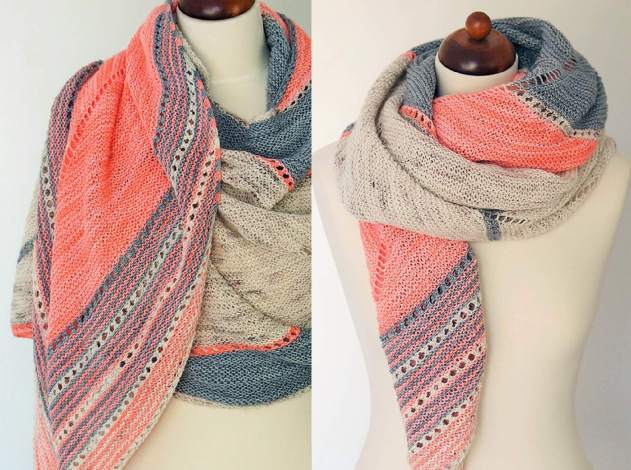

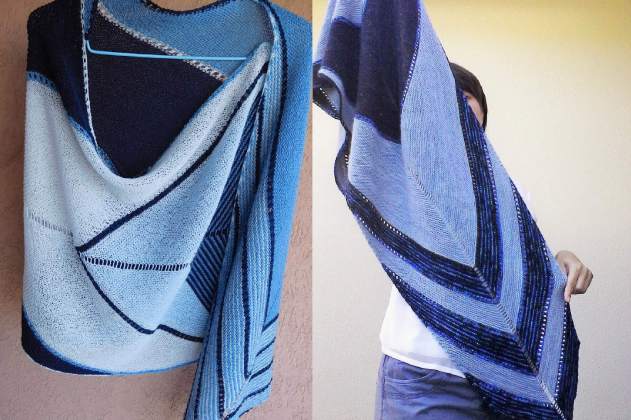

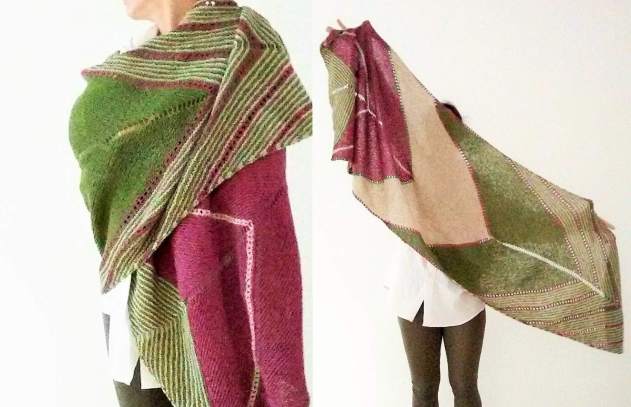

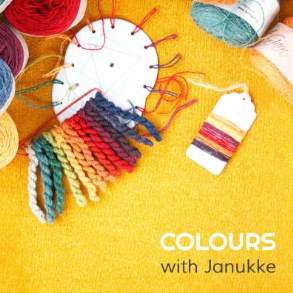 I am back to blogging after a long hiatus. I had stopped writing here because I was focusing on other aspects of being a knitwear designer. There´s a lot to do and only so much time. But right now the writing mojo is back.
I am back to blogging after a long hiatus. I had stopped writing here because I was focusing on other aspects of being a knitwear designer. There´s a lot to do and only so much time. But right now the writing mojo is back.